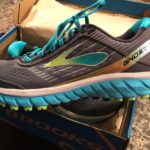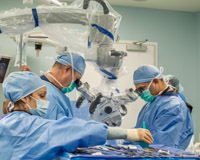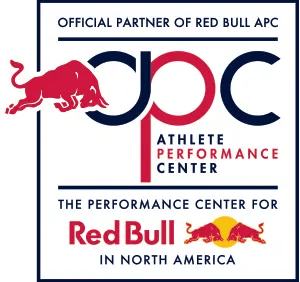Dr. Alexis Dixon is an Orthopedic Foot and Ankle Surgeon as well as an avid runner who is currently in her last weeks of preparation for the Pasadena Half Marathon. After that, she has only 2 short months to get ready for the Los Angeles Marathon. With that in mind, she took some time to answer a few questions on what long distance runners should look for in a running shoe and why having the proper shoes is so important.
What are the most important features for a running shoe for distance runners?
In Los Angeles, most running routes are on concrete or asphalt pavement. As I tell many of my patients, God invented feet long before man invented paved roads. The best protection for your feet for a long distance is a shoe with good cushion, especially at the heel. A well-cushioned shoe can decrease the amount of pressure your foot sees by half.
You also want some structure to the sole of the shoe. It should not be too flexible or bendy, to protect the joints in the middle of your foot from repeated wear, which can lead to arthritis.
You should also change your shoes out regularly. Data suggest that they should be changed every 300-500 miles. You can also change your insert to extend the longevity of the shoe itself.
Should I size up for a marathon?
It’s a good idea to have a shoe that allows for about ¾-1” of space in the front of the toes to allow for swelling. The Los Angeles Marathon is downhill, which means that a runner’s foot is crammed into the front of the shoe for a majority of the race. This often leads to toenail injury, and can injure the soft tissues of the toe which can lead to hammer toes. If you have to size up to allow for the swelling, be sure that your heel doesn’t piston in the back of the shoe to avoid blisters. If you add a shoe insert under the factory insert for extra cushion, you will definitely want to increase your shoe size to allow for more room in the upper.
I can’t find the shoes I used to wear. What do I do?
A typical beginner’s training program for a marathon includes 482 miles of running, and that doesn’t include cross-training. You don’t want to use very worn shoes on race day, so you should anticipate being on your third pair of shoes on the day of the race (be sure you’ve tried them on a long run before).
 Dr. Dixon recommends a shoe with plenty of cushion, especially in the heel. Find a brand that works with you and stick with that brand. Manufacturers update shoes every year, but usually maintain a similar shape with each new model. Shoe production continues to be mostly hand-made around a model called a last, and each manufacturer uses a last of a slightly different foot shape. Shoe manufacturers typically use the same last every year in production. This means that if shoes by Asics typically fit you best, it’s a last that is shaped more like your foot than other brands, and you will probably have the best success staying with that brand.
Dr. Dixon recommends a shoe with plenty of cushion, especially in the heel. Find a brand that works with you and stick with that brand. Manufacturers update shoes every year, but usually maintain a similar shape with each new model. Shoe production continues to be mostly hand-made around a model called a last, and each manufacturer uses a last of a slightly different foot shape. Shoe manufacturers typically use the same last every year in production. This means that if shoes by Asics typically fit you best, it’s a last that is shaped more like your foot than other brands, and you will probably have the best success staying with that brand.
More importantly, when you find a model of a shoe that you really like, go back and buy numerous pairs, so that when it’s time to change shoes, you’re getting the exact shoe you want. You can sometimes find old models on Amazon or Ebay if they’re no longer available in store, but you often spend more for them.
What about minimalist running shoes?
Minimalist running shoes are a hot new trend, and there is exciting research being done on the different running stride necessary when shoes are stripped of the padding. The high impact forces runners to alter their running gait to a toe landing, protecting the calcaneus, or heel bone. This strengthens the intrinsic muscles of the foot, and has been hypothesized to prevent injury. We don’t have any data convincing enough that I would recommend that any runner change their gait for a long distance run. This is especially true for runners who are forced to run on concrete. There is a high risk of developing stress fractures when the cushion is stripped. As many early adopters found. If you are going to change your stride and wear minimalist shoes, I would recommend doing so gradually over a long period, and start with smaller races such as 5K before training for a marathon with minimalist shoes.
Any tips for trail-runners?
Trail running is great because the soft ground allows for much less impact on the foot. However, the ankle is now at risk of an inversion, or twisting, injury. Inversion injuries can be mild in the form of ankle sprains, but can also lead to fractures about the foot and ankle. Therefore, trail running shoes are high-topped sneakers that should be laced tightly enough to provide some ankle stability.

About the author
discmdgroup DISC Sports & Spine Center (DISC) is a national leader in minimally invasive spine surgery, orthopedic surgery, and sports medicine care. Our spine surgeons set the standard in artificial disc replacement, spine fusion, discectomy, microdiscectomy and the full spectrum of spine procedures. The group’s orthopedic surgeons advance the state of joint preservation surgery and total joint replacement, including total knee replacement as well as total hip replacement. Our flagship surgery centers based in Newport Beach, Marina del Rey, and Carlsbad serve patients local to Los Angeles, Orange County and San Diego, as well as the rest of the country. Read more articles by discmdgroup.





